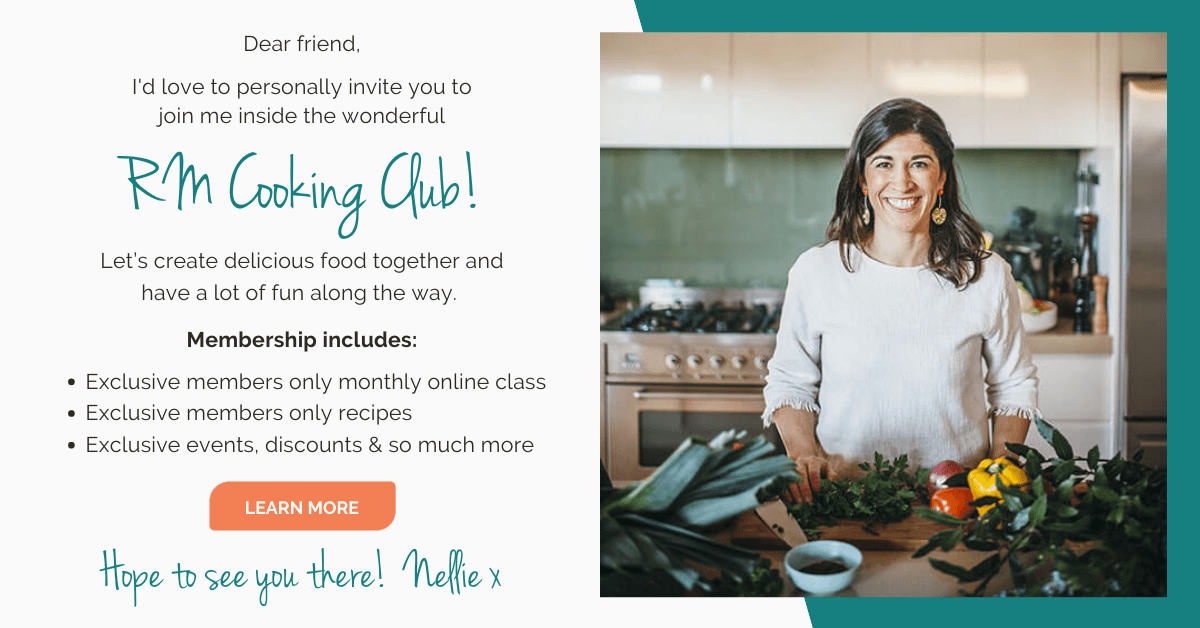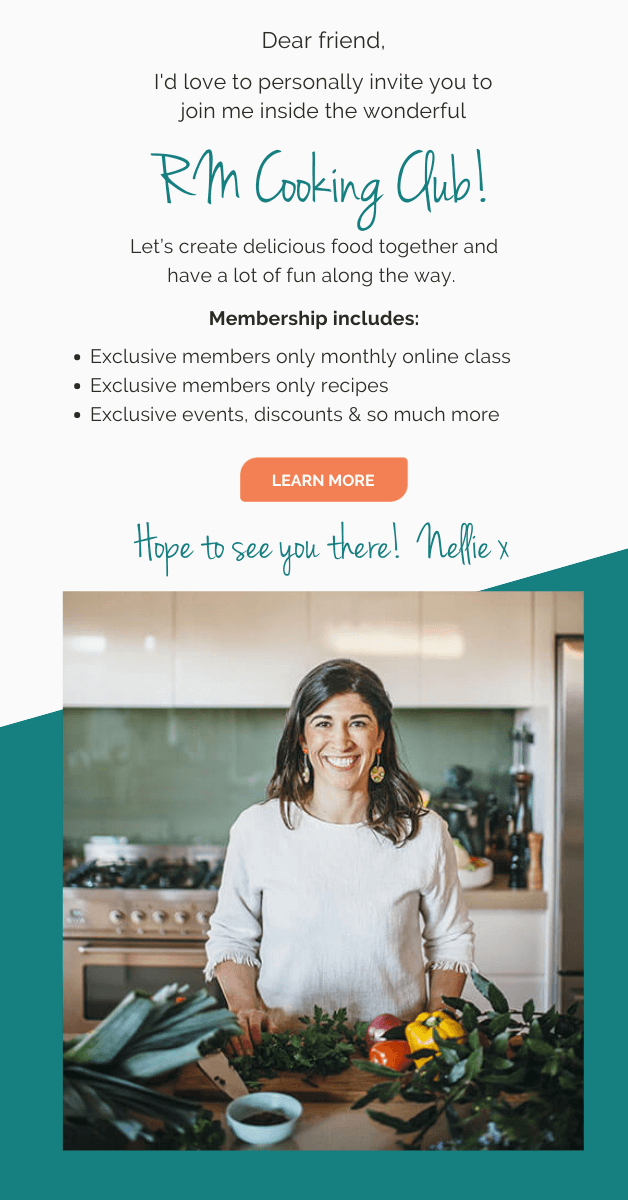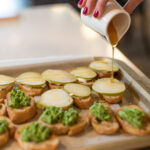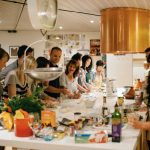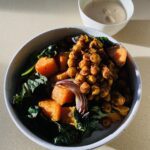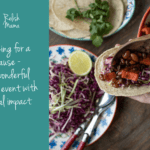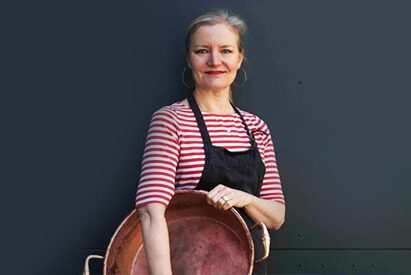
Meet Caroline Gray
Caroline has extensively worked in the food and hospitality industries for more than 30 years. For the past 15 years, she has focussed on artisanal preserving – where she has been recognised as an award-winning expert. Besides teaching at several cooking schools around Melbourne, Caroline also assists clients in product development and contract production.
Using her grandmother’s copper pan, Caroline enjoys sharing her knowledge while teaching how to make the very best jams, jellies, marmalades, pickles and relishes.
What led you to work in artisanal preservation?
Like most aspects of my working life, I kinda found myself there without a real plan. Preserving is something that has always interested me, but it wasn’t until about 15 years ago that it became my full-time work, managing a small preserving business for a friend.
As in any small business, to succeed you need to be able to turn your hand to whatever it is that needs doing. I found that, as the business grew, I was doing less of what I really loved (creating new recipes) and having to focus on admin (not a true passion!). Starting A Bit of Jam & Pickle has allowed me to get back to basics when it comes to creating recipes from scratch without compromising on scaling up a recipe. It has also led me down some other very fun paths such as the opportunity and encouragement to teach classes other than preserving at Relish Mama (thanks Nellie) as well as judging at the RASV.
Is there a chef you admire or admired growing up? How did their cooking philosophy impact you?
During high school, my best friend’s parents owned an Italian restaurant, Rigoletto, in the ’70s and ’80s. And as they lived above it, I spent lots of time there. The food was classic northern Italian. Santina was the chef and Gino was front of house and the line between the two was not to be crossed. It was such an eye opener for a girl from the ‘burbs, both exciting and a little awe-inspiring. We got to eat in the restaurant before it opened for dinner so it was all terribly glamorous.
This was during the very early ’80s and there was a dearth of good restaurants in Melbourne, but Rigoletto was certainly up there and just a notch under the likes of Stephanie’s, Fanny’s and Marchetti’s Latin. Santina’s reverence for her ingredients is what I remember most about her approach to cooking. She had a very good relationship with her suppliers, but I know she kept them on their toes. The kitchen was entirely Santina’s domain, sometimes in a slightly terrifying way, so it has never occurred to me that cooking was a male-dominated industry.
You are a very big fan of Ottolenghi’s dishes and teach the popular vegetarian classes in the style of Ottolenghi at Relish Mama. What you love so much about this style of food as well as Yotam Ottolenghi himself?
Where do I start? I have a big culinary crush on Yotam Ottolenghi and I think his influence on how we eat and cook with vegetables, in particular, has been profound. I love his vibrant use of colours, textures and spices. His own culinary influences are culturally diverse, but he blends seemingly-disparate ingredients and styles them into something new and delicious over and over again.
You are fast becoming an expert on fermentation. Can you share more about this?
The more I ferment, the more I realise that the possibilities are endless when it comes to fermentation. When we stop and think about it, most of what we eat is fermented – bread, cheese, chocolate, yoghurt, wine, salami, dill pickles, krauts, soy, miso, beer, vinegar, fish sauces and then, of course, kombuchas and kefir.
In contrast to pickling and preserving the process of fermentation is a completely different way of enabling food to last a very long time. The former relies on adding ingredients such as sugar, salt and vinegar to maximise shelf life whereas fermentation is about creating an environment that encourages good bacteria to flourish whilst controlling bad bacteria. This bacteria not only allows the food (or alcohol) to last far longer, but it starts to break down the food so our bodies absorb nutrients that would ordinarily pass through us.
What are your top five tips for preserving?
- Make sure your ingredients are as fresh as possible. It’s a bit of a myth that you make jams and relishes from rotting fruit.
- Don’t be afraid of sugar – it’s a great preservative. If you want to use less, then just remember that the shelf life will be lessened and you will need to store and eat accordingly.
- Play around with different spices in chutneys and relishes.
- Cook your jams quickly to preserve the colour and flavour of the fruit. Adding a little jamsetta near the end helps with fruit that is low in pectin.
- Giving away a jar of delicious homemade jam or relish gives you a very good feeling!
Do you have a favourite flavour or ingredient to work with?
If it wasn’t for salt, then we would quite possibly be still living in caves. From a preserving and fermentation point of view, salt is absolutely critical, so I do have a love for all things salty. We are so lucky to have such a wide range of excellent Australian salts to choose from.
What is your cooking philosophy?
Balance, bold flavours, colours, spices, and elevating the humblest ingredients to something special.
Waste as little as possible – I’m already planning what to do with leftovers before I’ve made a meal.
Your classes have a great focus on seasonal, fresh ingredients. How do you share this with your students and what impact do you find it has on them?
Being a preserver, there is naturally a strong emphasis for me to use what is in season, bountiful and well priced. In my classes, the conversation almost always touches on where to shop for really good ingredients. I have picked up some great tips from people attending classes and I love sharing these during classes and also where I source the best raw materials across Melbourne.
I also try and impart quite a few tips in each class to make the process of everyday cooking a little simpler and more enjoyable.
*
Learn how to jam, pickle, infuse, dry, and ferment (it’s not as hard as it seems, really!) with Caroline! You can visit Caroline’s wonderful classes below.
- TAGS:
